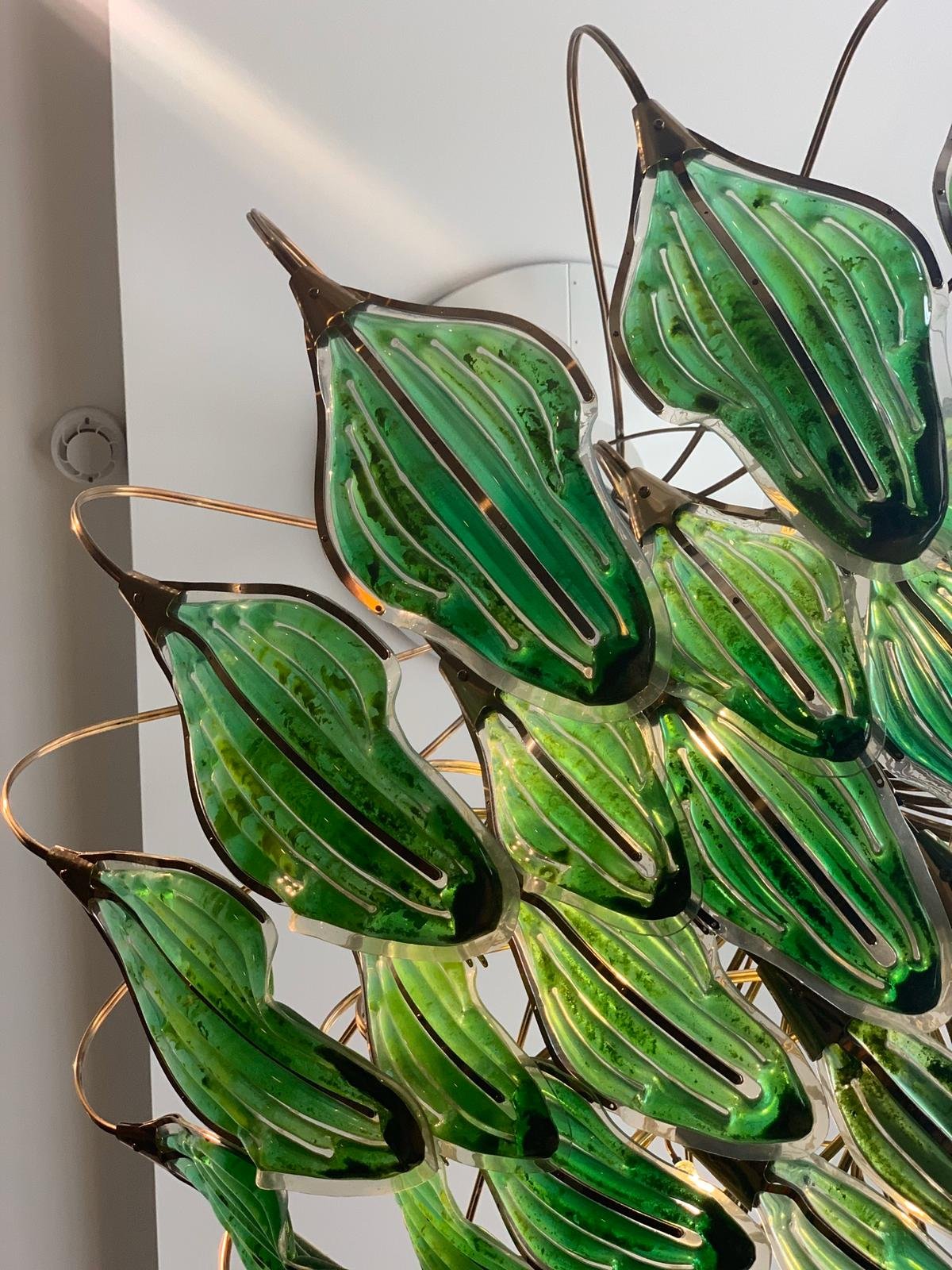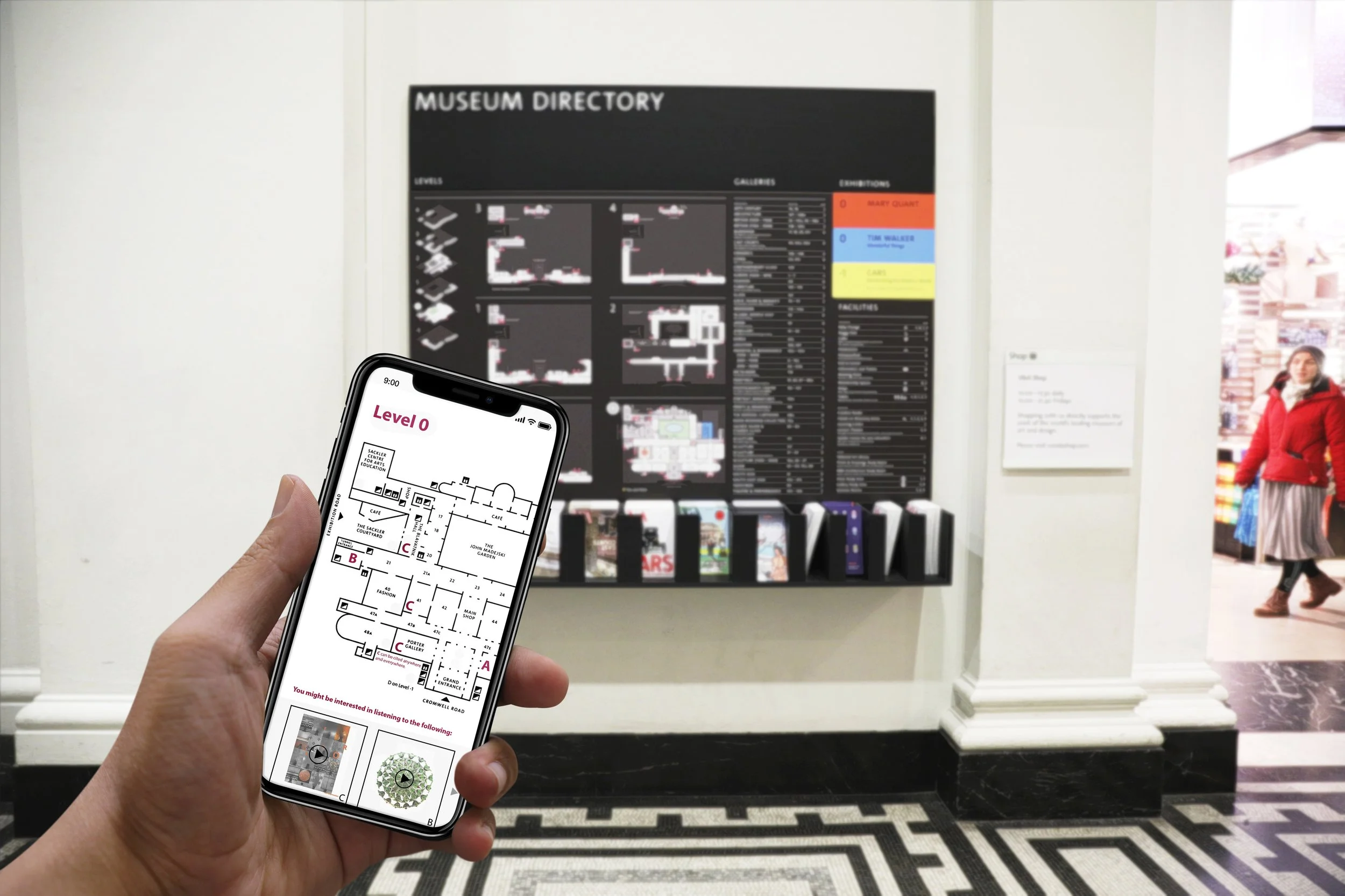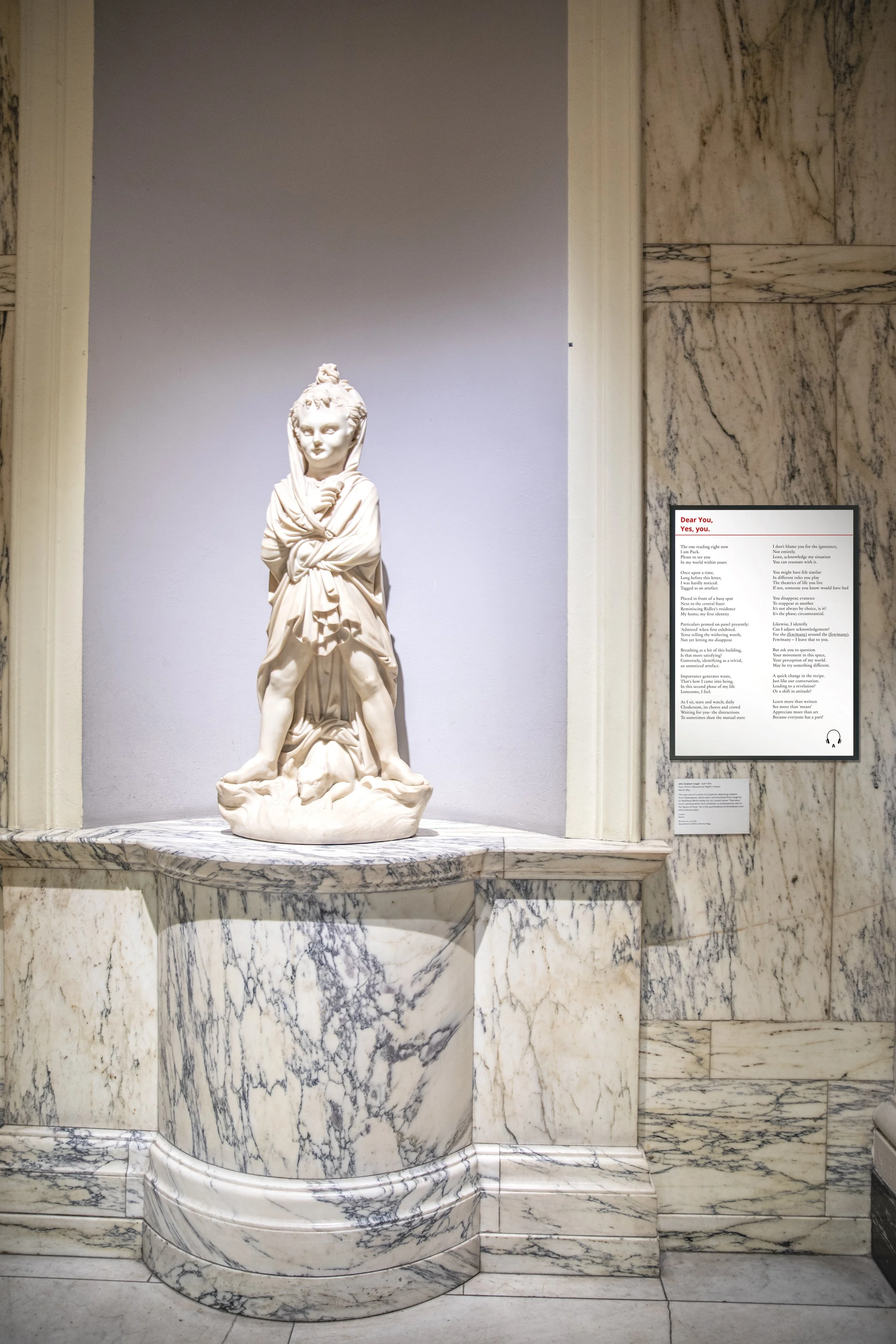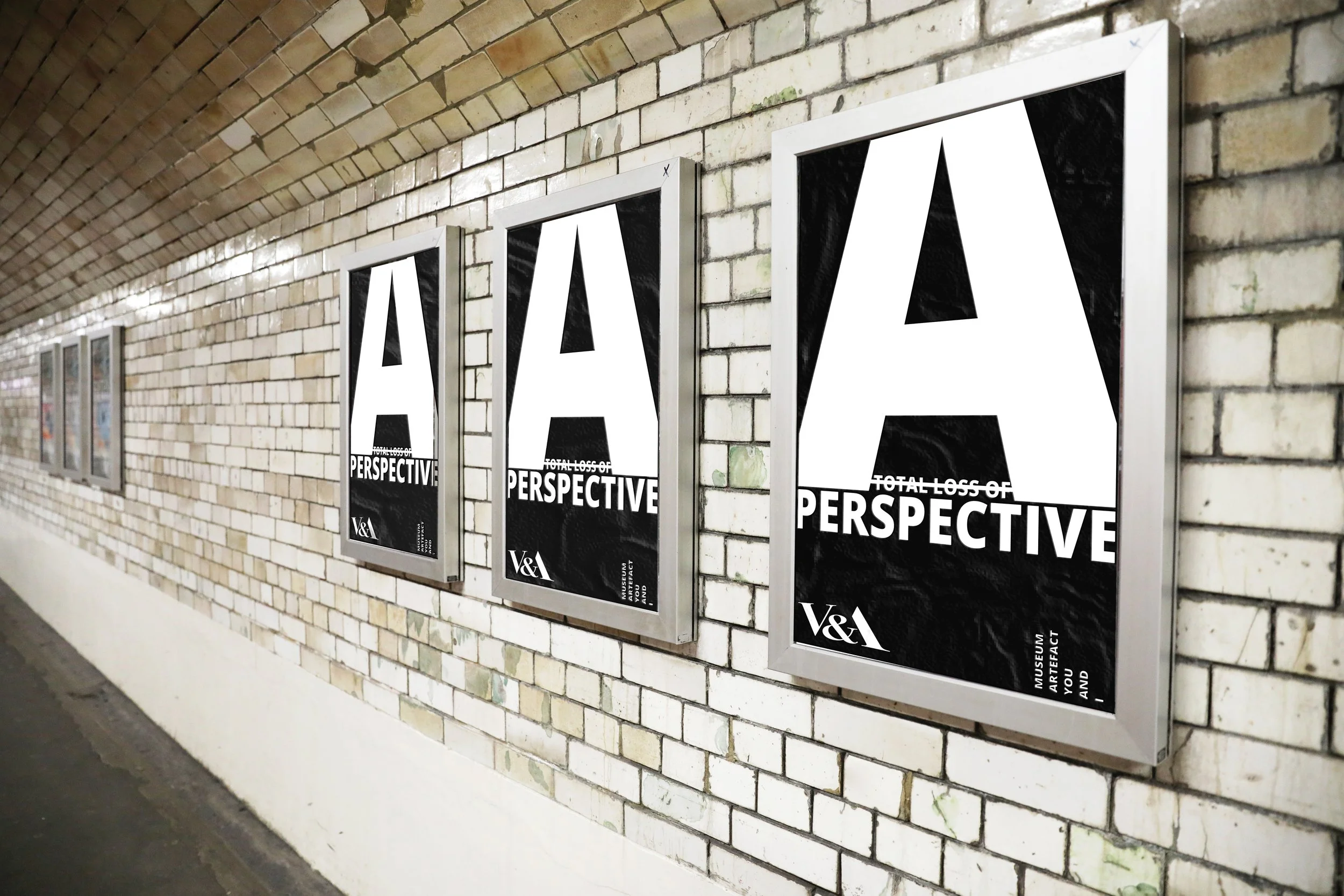
2019 Case Study
Proposed Intervention: Victoria & Albert Museum
Self-led Project
A (total loss of) Perspective
*
A (total loss of) Perspective *
A total loss of Perspective was a speculative curatorial and writing-based intervention led by Nayanika Singh at the Victoria and Albert Museum, London. As an independent, self-initiated case study, the project explored how artifacts shift in meaning and identity before and after conservation — occupying fluid roles between object and narrative, visibility and obscurity.
The research focused on a museum’s spatial politics, examining how placement, signage, and infrastructure contribute to what is seen, remembered, or overlooked. Through casual interviews, video documentation, photographic evidence, and narrative writing, Nayanika traced hidden stories embedded in the museum’s architecture — such as unnoticed floor tiles or peripheral displays near cloakrooms.
Instead of critiquing institutional authority, the project offered gentle disruptions—suggestive interventions that encouraged alternative forms of looking, listening, and interpreting. Drawing on museological theory and embodied writing, it framed the museum as a site of layered perception and speculative meaning-making.
-
To explore the shifting identity of museum artifacts through the lenses of conservation, narrative, and spatial politics.
-
In-situ observations at the V&A Museum
Casual interviews with museum staff and visitors
Critical reading of museological and philosophical texts (Bryson, DeSilvey, DeSilva)
Experimental, embodied writing as intervention
Visual and audio documentation of interventions
-
Object semiotics and material memory
Display architecture and curatorial authorship
Institutional invisibilities
The affective life of museum spaces
-
Creative-critical writing in the form of artifact monologues
First-person letter-based speculative narratives
Poetic reflections on spatial placement and neglect
Non-linear, democratised voice-driven narration
-
A site-responsive, Public engagement proposal, featuring sound-based exhibition using QR codes placed discreetly throughout the permanent collection
Supporting publication prototype
Supporting essay exploring speculative museology and embodied writing as curatorial method
“What makes something visible? What makes something heard? Photographs of floor patterns. Voice notes from security staff. Scribbled visitor quotes. Paused moments in stairwells. A speculative map to plot what's left out. Together, they shaped an inquiry into the museum’s unnoticed spaces and its unassuming treasures.”
Visitors were invited to scan, to listen, to pause.
To hear the museum speak—not through grand narratives, but through what it left unsaid.
Can you hear it?
Can you see it?
Do you want to know more?
Museum
〰️
Artefact
〰️
You & I
〰️
Museum 〰️ Artefact 〰️ You & I 〰️
Partially penned-down interview with the cloakroom attendant
00:00:12 - Evidencing day-to-day activities near V&A cloakroom, where dear Puck is almost invisible. Click the image to view site recording
WHERE DO I LOOK?
LOOK AT THE OVERLOOKED
objects & spaces
Not necessarily non-artefacts,
even artefacts can be overlooked.
Catch audience by surprise in the usual sites
& offer them a fresh approach.
Take a deep breath.
The chandelier in the window holds living cells that photosynthesise, absorbing carbon dioxide and producing oxygen, purifying the AIR we breathe.
It breathes, like the greens!
A (total loss of) Perspective
Related Documents
-

Exploring the balance between shifting identities of artefacts and audience perception in Victoria & Albert Museum












